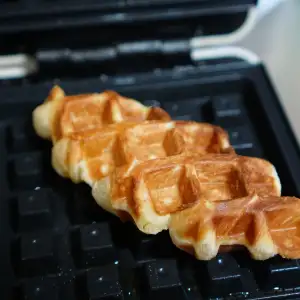Delight in the Flavors of Easter: A Delectable Recipe for Traditional Easter Bread

- Ingredients for Easter Bread: Exploring the Key Elements
- Step-by-Step Instructions: Making Your Own Easter Bread at Home
- Tips and Tricks for Perfect Easter Bread: Expert Advice
- Serving and Enjoying Easter Bread: Pairing Suggestions and Ideas
- Variations and Additions: Customizing Your Easter Bread Recipe
Easter is a time of joy and celebration, and one of the most cherished traditions during this holiday season is the baking of Easter bread. This delectable treat has been enjoyed for centuries, with its rich history and mouthwatering flavors. Whether you are a seasoned baker or a novice in the kitchen, making your own Easter bread is a wonderful way to embrace the spirit of Easter and create lasting memories with loved ones. In this article, we will delve into the world of Easter bread, exploring its origins, significance, and most importantly, how to make it at home. Get ready to embark on a culinary journey that will fill your home with the delightful aroma of freshly baked bread and bring joy to your taste buds.
Ingredients for Easter Bread: Exploring the Key Elements
When it comes to making traditional Easter bread, the key lies in using the right ingredients. Here are the essential elements you'll need to create a delicious loaf:
1. Flour: Start with all-purpose flour or bread flour for a sturdy texture and good rise.
2. Yeast: Active dry yeast or instant yeast will help the dough to rise and give it a light and fluffy texture.
3. Sugar: A touch of sweetness is added with granulated sugar or honey.
4. Milk: Use warm milk to activate the yeast and add moisture to the dough.
5. Butter: Unsalted butter adds richness and flavor to the bread.
6. Eggs: Eggs are an integral part of Easter bread, providing structure and richness.
7. Salt: Don't forget a pinch of salt to balance out the flavors.
8. Vanilla extract: For a subtle hint of flavor, add a splash of vanilla extract.
9. Raisins and citrus zest (optional): Some recipes call for raisins soaked in rum or brandy, as well as citrus zest for added fragrance and taste.
By gathering these key ingredients, you're well on your way to creating a mouthwatering Easter bread that will be enjoyed by all!
Step-by-Step Instructions: Making Your Own Easter Bread at Home
1. In a large mixing bowl, combine 2 cups of flour, ¼ cup of sugar, and 1 packet of active dry yeast. Mix well.
2. In a separate saucepan, heat ½ cup of milk and 4 tablespoons of butter until the butter melts. Remove from heat and let it cool slightly.
3. Add the milk mixture to the flour mixture and mix until a soft dough forms.
4. Gradually add in 2 beaten eggs, ½ teaspoon of salt, and 1 teaspoon of vanilla extract. Mix well.
5. Slowly add in another 2 cups of flour, one cup at a time, until the dough becomes smooth and elastic.
6. Transfer the dough onto a floured surface and knead for about 5 minutes until it is no longer sticky.
7. Place the dough in a greased bowl, cover with a clean kitchen towel, and let it rise in a warm place for about an hour or until it doubles in size.
8. Once risen, punch down the dough to release any air bubbles and divide it into three equal parts.
9. Roll each part into a long rope shape and braid them together on a greased baking sheet.
10. Cover the braided bread with the kitchen towel again and let it rise for another hour or until it doubles in size once more.
11. Preheat your oven to 350°F (175°C).
12. In a small bowl, whisk together 1 egg yolk and 1 tablespoon of milk to create an egg wash.
13. Brush the egg wash over the risen bread gently to give it a beautiful golden color when baked.
14. Bake for approximately 25-30 minutes or until the bread is golden brown on top and sounds hollow when tapped on the bottom.
15. Remove from oven and let it cool on a wire rack before slicing and serving.
Enjoy your homemade Easter bread with family and friends!
Tips and Tricks for Perfect Easter Bread: Expert Advice
To ensure your Easter bread turns out perfectly, here are some expert tips and tricks:
1. Use fresh ingredients: Make sure your yeast is not expired and that your flour is fresh for the best results.
2. Activate the yeast: Dissolve the yeast in warm water with a pinch of sugar to activate it before adding it to the dough. This will ensure a good rise.
3. Knead well: Properly kneading the dough helps develop gluten, giving your bread a light and airy texture. Knead until the dough is smooth and elastic.
4. Allow time for rising: Let the dough rise in a warm place, free from drafts, until it has doubled in size. This usually takes about 1-2 hours.
5. Shape with care: When shaping your Easter bread, be gentle to avoid deflating the dough. Take your time to create beautiful braids or other desired shapes.
6. Brush with egg wash: Before baking, brush the surface of the bread with an egg wash for a shiny golden crust.
7. Monitor baking time: Keep a close eye on your bread while it bakes as oven temperatures can vary. Bake until golden brown and hollow-sounding when tapped on the bottom.
By following these tips and tricks, you'll be able to create a perfect Easter bread that will impress your family and friends!
Serving and Enjoying Easter Bread: Pairing Suggestions and Ideas
Once your homemade Easter bread is ready, it's time to savor its delightful flavors. There are several ways to enjoy this traditional treat. One classic option is to simply slice the bread and serve it as is. The soft, slightly sweet texture pairs perfectly with a cup of hot tea or coffee.
For a more indulgent experience, try spreading some butter or cream cheese on a warm slice of Easter bread. The creamy richness complements the bread's subtle sweetness, creating a heavenly combination.
If you're feeling adventurous, you can also use Easter bread as a base for French toast. Dip thick slices into an egg and milk mixture, then fry them until golden brown. Top with powdered sugar and maple syrup for a decadent breakfast or brunch treat.
For a festive twist, consider making Easter bread sandwiches. Fill them with your favorite ingredients like ham, cheese, or even Nutella for a delightful combination of flavors and textures.
Another creative idea is to use Easter bread as the base for bread pudding. Tear the bread into chunks and mix it with eggs, milk, sugar, and spices before baking until golden and custardy. Serve warm with a drizzle of caramel sauce or whipped cream for an unforgettable dessert.
No matter how you choose to serve it, Easter bread is sure to bring joy to your table during this special holiday season. So gather your loved ones, share stories and laughter over slices of homemade goodness, and embrace the spirit of Easter with every bite
Variations and Additions: Customizing Your Easter Bread Recipe
While the traditional recipe for Easter bread is undeniably delicious, there are endless possibilities for customizing and adding your own unique twist to this festive treat. Here are a few ideas to inspire your creativity:
1. Fruity Delights: Add dried fruits such as raisins, currants, or chopped apricots to the dough for bursts of sweetness. You can also try incorporating candied citrus peel or even fresh berries for a refreshing twist.
2. Nutty Goodness: For added texture and flavor, consider mixing in some chopped nuts like almonds, walnuts, or pistachios. Toast them beforehand to enhance their nuttiness.
3. Spices Galore: Experiment with different spices to infuse your Easter bread with warmth and depth. Traditional options include cinnamon, nutmeg, and cardamom. For a more exotic touch, try adding a pinch of saffron or ground cloves.
4. Sweet Glazes: After baking your Easter bread, brush it with a sweet glaze while it's still warm. A simple mixture of powdered sugar and milk works wonders, but you can also get creative by using flavored syrups like orange blossom or rosewater.
5. Decorative Touches: Make your Easter bread visually appealing by adding decorative elements on top before baking. Consider shaping the dough into intricate braids or forming it into a wreath shape adorned with colorful sprinkles or dyed eggs.
Remember, these suggestions are just the beginning – feel free to let your imagination run wild! The beauty of homemade Easter bread lies in its versatility and ability to reflect your personal taste preferences.
By customizing your Easter bread recipe, you can create a truly unique and memorable treat that will delight both young and old alike during this special holiday season. So go ahead and embrace the spirit of experimentation – who knows what delicious surprises await you!
In conclusion, there is no better way to embrace the Easter spirit than by indulging in the delightful flavors of homemade Easter bread. This traditional treat not only brings a sense of nostalgia and warmth to your celebrations but also allows you to showcase your culinary skills and creativity.
By following the step-by-step instructions and incorporating expert tips and tricks, you can create a perfect loaf of Easter bread that will impress your family and friends. The aroma of freshly baked bread filling your home will add to the festive atmosphere and create lasting memories.
Remember, don't be afraid to experiment with variations and additions to make your Easter bread truly unique. Whether it's adding dried fruits, nuts, or even a touch of chocolate, let your imagination run wild and customize this recipe to suit your taste preferences.
So this Easter, gather your loved ones around the table and savor the joyous occasion with a slice of homemade Easter bread. Let its soft texture, sweet aroma, and rich flavors transport you to a place where tradition meets deliciousness. Happy baking!
Published: 10. 12. 2023
Category: Home



